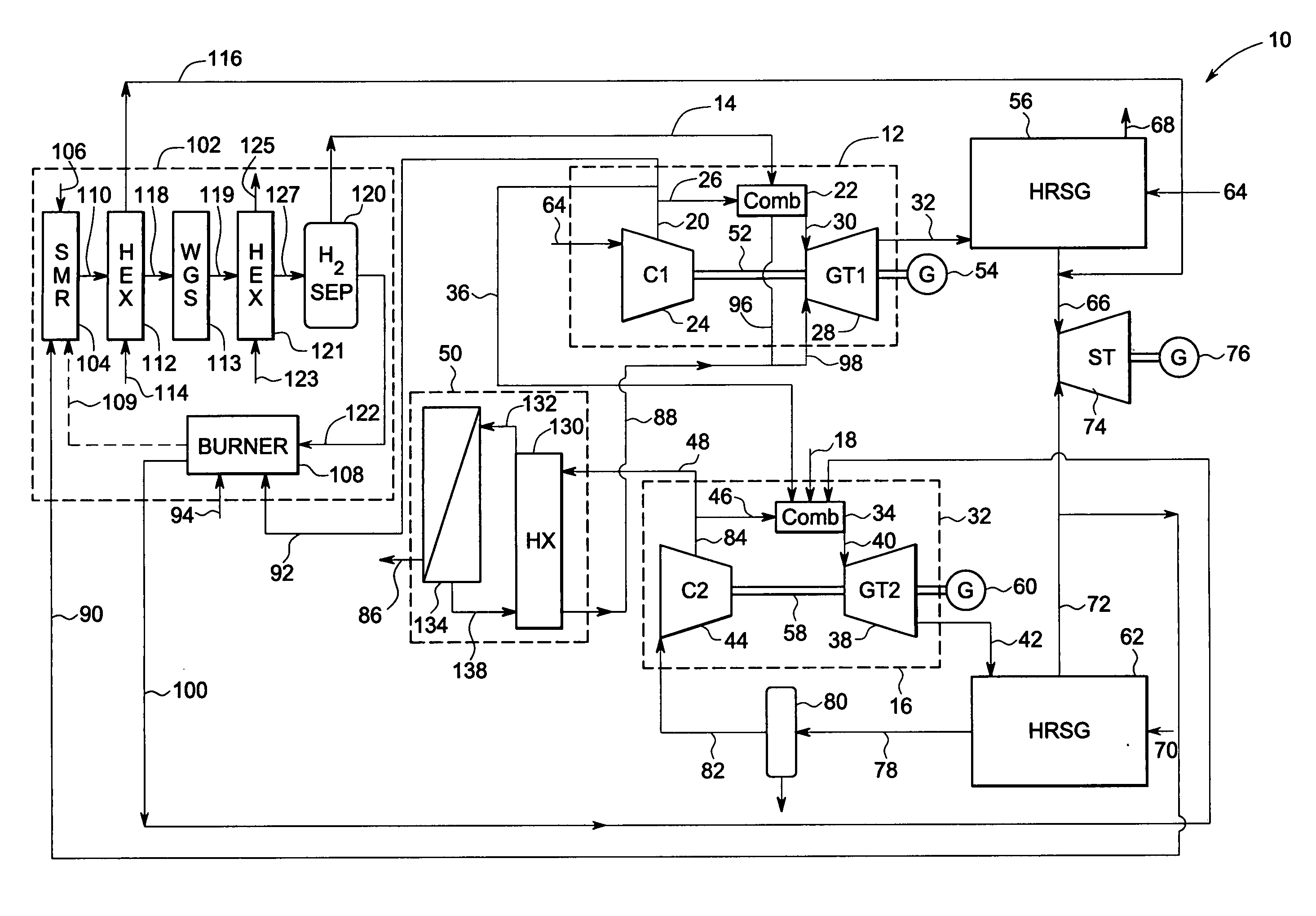Systems and methods for power generation and hydrogen production with carbon dioxide isolation
a technology of power generation and hydrogen production, which is applied in the direction of machines/engines, mechanical equipment, energy input, etc., can solve the problems of increasing economic and legislative constraints on cosub>2/sub>, removing or recovering cosub>2/sub> from power generation systems, such as the exhaust of gas turbines, and generally not economical,
- Summary
- Abstract
- Description
- Claims
- Application Information
AI Technical Summary
Problems solved by technology
Method used
Image
Examples
Embodiment Construction
[0012] The present technique provides for two or more exemplary gas turbine systems operating in a power generation system to share a common supply of compressed oxidant. As a result, compression capacity may be freed in one or more of the turbine systems to be employed in the recovery of carbon dioxide (CO2) generated by one or more of the turbine systems. In one example, a compressor in a first turbine system supplies oxidant (via conduits) to a combustion chamber in the first turbine system and also to a combustion chamber in a second turbine system, freeing a compressor in the second turbine system. As discussed below, this freed compression capacity may be employed in the separation and recovery of carbon dioxide (CO2) and other components from the exhaust of one or more of the gas turbines. The recovered CO2 may be sold as product or consumed on-site as feed in other processes, for example. Further, such recovery of CO2 may reduce the amount of CO2 emitted to the environment f...
PUM
 Login to View More
Login to View More Abstract
Description
Claims
Application Information
 Login to View More
Login to View More - R&D
- Intellectual Property
- Life Sciences
- Materials
- Tech Scout
- Unparalleled Data Quality
- Higher Quality Content
- 60% Fewer Hallucinations
Browse by: Latest US Patents, China's latest patents, Technical Efficacy Thesaurus, Application Domain, Technology Topic, Popular Technical Reports.
© 2025 PatSnap. All rights reserved.Legal|Privacy policy|Modern Slavery Act Transparency Statement|Sitemap|About US| Contact US: help@patsnap.com



